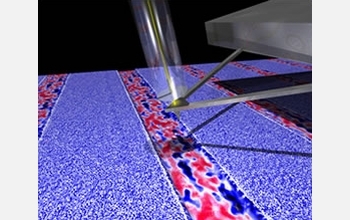Multimedia Gallery
Scientists observed trapped electrical charge in an organic semiconductor for the first time.
Cornell scientists are trying to better understand conductivity in organic electronic materials--carbon-based molecules that behave like semiconductors--so they might one day be used for cheap mass-produced electronics, sensors, and solar cells. Using electric-force microscopy, the scientists observed trapped electrical charge in an organic semiconductor for the first time.
Credit: John A. Marohn, Erik M. Muller, Cornell Center for Materials Research; copyright Advanced Materials, Wiley-VCH
Images credited to the National Science Foundation, a federal agency, are in the public domain. The images were created by employees of the United States Government as part of their official duties or prepared by contractors as "works for hire" for NSF. You may freely use NSF-credited images and, at your discretion, credit NSF with a "Courtesy: National Science Foundation" notation.
Additional information about general usage can be found in Conditions.
Also Available:
Download the high-resolution version of the image. ()
Use your mouse to right-click (Mac users may need to Ctrl-click) the link above and choose the option that will save the file or target to your computer.
Related story: NSF Centers Will Use Nano-Interface Control and Bioengineering for Materials by Design



